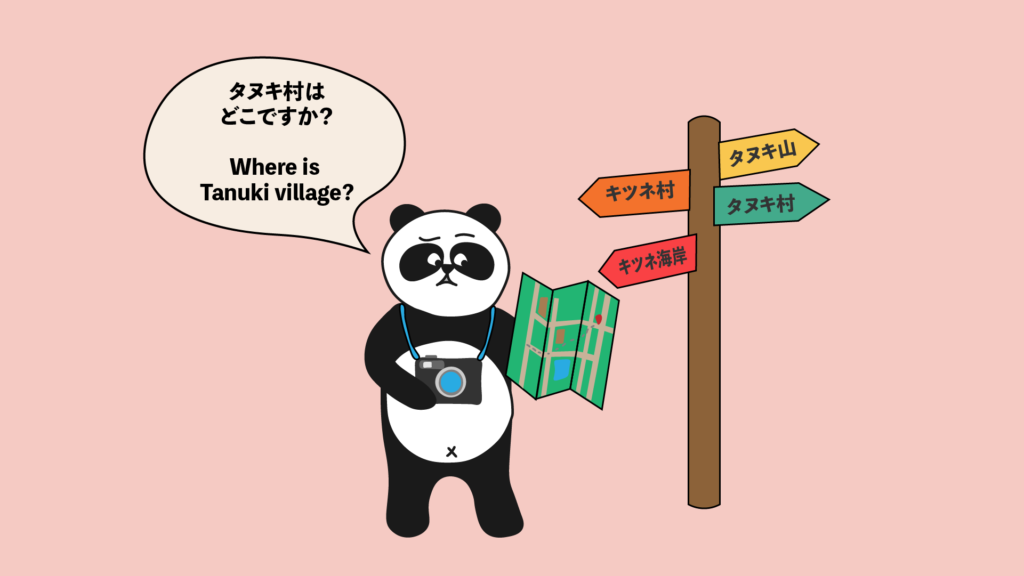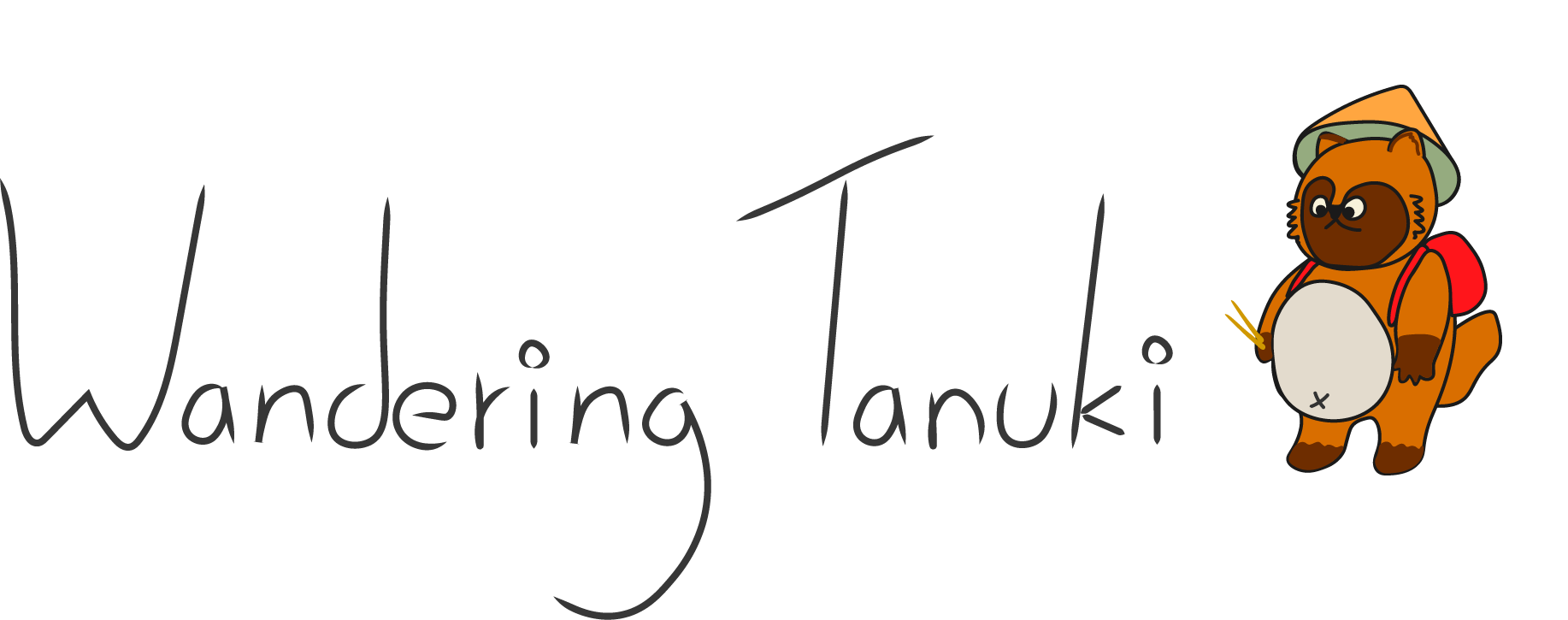How to Ask for Directions in Japanese
If you’re traveling Japan, you might want to know how to ask for directions in Japanese. Smartphones have made it less likely to get lost, but you never know when you might find yourself with no battery in a foreign country!

At the end there’s a dialogue with Panda-san. He is Tanuki’s friend visiting from China. He’s trying to get to Tanuki’s village, but he’s lost!
Approaching someone:
When you’re asking directions, the first thing you’ll have to do is to find someone to ask! It’s probably best to ask a couple people so you know that you’ve been given the right direction. One thing about Japanese people is that they might be afraid to speak in English and can ignore foreigners. Don’t feel offended or discouraged, and try to find someone else!
In Japanese, there is only one main phrase you should use as an “excuse me” or a “hello”. In Japanese, it’s a bit strange to say “hello” to a stranger. The word you should use before asking for directions is:
すみません。
Sumimasen.
Excuse me.
Asking for directions:
The next step on how to ask for directions in Japanese is to say your question. Here are some phrases you can use to find locations. In the blank you simply have to add the place you’re looking for. It’s a good idea to know the vocabulary in advance for various landmarks and useful locations.
近くに___はありますか?
Chikaku ni ___ wa arimasuka?
Is there a ___ nearby?
この辺りに___はありますか?
Kono atari ni ___wa arimasuka?
Is there a ___around here?
___はどこですか?
___ wa doko desuka?
Where is ___?
Vocabulary to understand directions:
In order to understand the directions someone will give you, you’ll need to know some key vocabulary.
Directions:
まっすぐ – massugu – straight
右 – migi – right
左 – hidari – left
後ろ – ushiro – back
前 – mae – front
中 – naka – inside
外 – soto – outside
わき or よこ – waki or yoko – next to
東 – higashi – east
西 – nishi – west
南 – minami – south
北 – kita – north
Other important words:
These are other words which are important to know for understanding directions. A key difference between English speakers and Japanese speakers might be that in Japan people don’t explain how many blocks you need to go. Instead, it’s more likely to count the number of traffic lights.
道 – michi- road
交差点 – kousaten – cross section
信号 – shingou – traffic light
角 – kado – corner
突き当たり – tsukiatari – at the end (of the road where splits)
坂 – saka – slope or incline
Verbs:
In most cases the verbs explaining directions will be changed to the te-form. If you don’t know what this is yet, I’ve also put the te-form version in the parenthesis.
曲がる(曲がって)- magaru (magatte) – To turn
行く (行って)- iku (itte) – to go
そう (そって) – sou (sotte) – to go alongside ( the road)
上がる (上がって) – agaru (agatte) – to go up
下がる (下がって) – sagaru (sagatte) – to go down
突き抜ける (突き抜けて)- tsukinukeru (tsukinukete) – to go through
Useful locations:
Knowing some key landmarks are useful so that people can explain how you can get somewhere. These are all common places that are present in every Japanese town and city.
神社 – jinja – shrine
お寺 – otera – temple
公園 – kouen – park
学校 – gakkou – school
コンビニ – konbini – convenience store
交番 – kouban – police office
銀行 – ginkou – bank
Other useful phrases:
If you’re looking for directions, you might also want to know a few other useful phrases!
地図はありますか?
Chizu wa arimasuka?
Do you have a map?
道がわかりません。
Michi ga wakari masen.
I don’t know the way.
遠いですか?
Tooii desuka?
Is it far?
近いですか?
Chikai desuka?
Is it close?
時間がかかりますか?
Jikan ga kakari masuka?
Will it take time?
Dialogue: Panda-san is lost!!
Panda is a tourist in Japan, he is trying to find how to get to Tanuki mura (tanuki village). That’s where his friend Tanuki lives. He asks someone on the street for directions! The stranger is marked with an “S” and Panda is marked with a “P”.
P: すみません。タヌキ村はどこですか?
Sumimasen. Tanuki mura wa doko desuka?
Excuse me, where is Tanuki village?
S: タヌキ村はまっすぐ行って、
Tanuki mura wa massugu itte,
To get to Tanuki village, go straight,
S:突き当たりを右に曲がって、
tsuki atari o migi ni magatte,
at the end (of the road) turn right,
S: 前の公園を突き抜けた所にあります。
Mae no kouen o tsukinuketa tokoro ni arimasu.
Then it’ll be there if you go through the park that’s in front.
P: ありがとうございます!これでタヌキさんに会えます!
Arigatou gozaimasu! Kore de tanuki san ni aemasu!
Thank you so much! Now I can meet Tanuki!
Now that you know how to ask for directions in Japanese, you’ll be ok even if you get lost like Panda-san! If you’re interested in other Japanese learning content be sure to check my other articles like How to Introduce Yourself in Japanese or Survival Phrases for Travelling Japan
~Tanuki






Hi Tanuki I am from Poland ,I have seven dreams,seven languages by seven days of week so Japan Language at Sunday.
Hi! Best of luck with your dreams and Japanese studies! Ganbare!